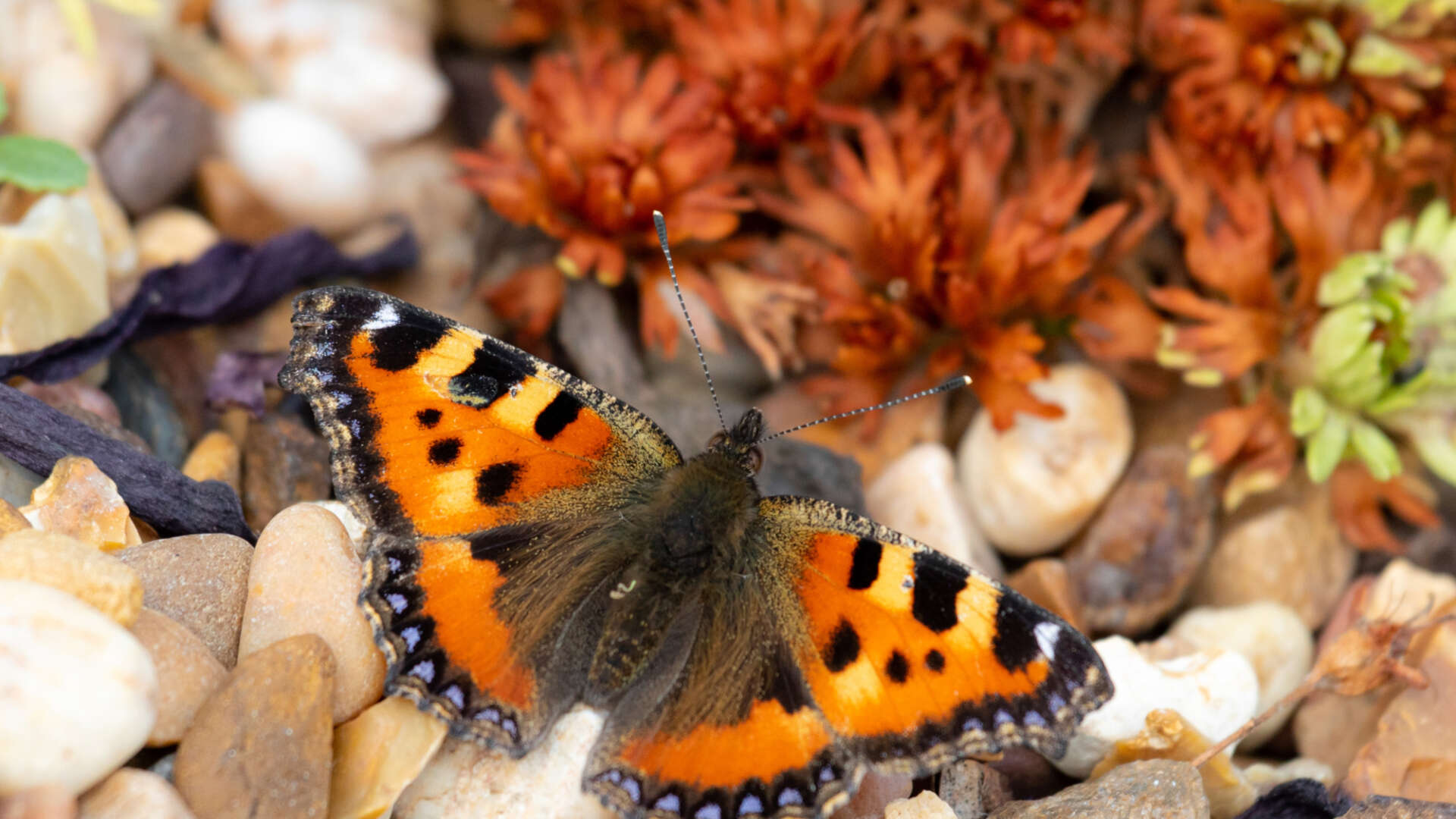Climate change: creatures on the move

It can’t have escaped anybody’s notice that our weather patterns have changed. The last 20 years have become wetter and warmer, with more violent swings between hot, cold or plain unpredictable. As I type this, I have apple trees, a solitary gladiolus and chrysanthemums flowering in mid-November 2020: this year has been yet another hottest ever recorded.
Over the past 60 years, I’ve watched changes in the UK wildlife and seen the return of raptors, vanishing water voles and a new set of continental species venturing further northwards. Since 2000, little egrets have moved in everywhere damp, harlequin ladybirds rapidly advanced, and ring-necked parakeets decamped from London simultaneously with the disappearance of house sparrows. Horse chestnut leaf miner showed up, as did ash chalara.
All over Europe, creatures are on the move: it’s been estimated that southern insect species are travelling northwards at the rate of around 12 miles a year, with around 15 new beetle species and over 10 new moths being recorded every year in the UK, although as with many records, this may be an expression of the number of recorders rather than the genuine recorded. What sort of creatures are we likely to see in our gardens now and in the next few years?
Some of the more obvious are new shieldbugs, sometimes known as stinkbugs. This European native first came to the UK in 2000: it now regularly breeds in the south-east where it’s often found on runner beans, particularly on allotments. The insects can be a major pest in Europe, devouring tomatoes, beans, maize and peppers, but here rarely cause serious damage, as populations only increase late in the season when bean crops have finished.
Another more worrying shieldbug is the Brown Marmorated Shieldbug Halyomorpha halys, originally from China and Japan but now almost worldwide. Adults were first found in Hampshire in 2018, travelling in suitcases, timber and clothing from the USA, as well as a consignment of stone from China, and have been found in increasing numbers every year since. Not only do these critters eat or damage over 100 recorded species of cultivated plants, but in autumn, they often attempt to overwinter in houses, leaving a persistent and hard-to-remove odour when disturbed.
Distinguishing Shieldbugs
Many of our harmless native shieldbugs look almost identical to the newcomers. Useful websites for distinguishing the difference include British Bugs, which has images of every life stage - vital in the case of shield bugs that don’t have true larvae, just smaller insect stages that can look dramatically different. You can also find a pdf about the Marmorated Brown Stinkbug that can be downloaded from DEFRA here.
Other mobile insects with dangerous potential include the highly irritant Oak Processionary Moth Thaumetopoea processionaea and the infamous Gypsy Moth Lymanitria dispar. Oak Processionary moths are extremely risky as the larvae shed particles of tiny hairs, which can cause severe skin irritation, asthma attacks and even eye damage. Originally confined to a few sites in London, DEFRA declared them a Notifiable Pest but put the onus of destroying nests (an expensive and hazardous procedure) on the landowner. Had the moths been classified as a public health danger rather than a tree pest, they might have been eliminated more easily.
Many colonies were overlooked or ignored, and this year adults have been found widely throughout most of Britain. It’s been estimated that southern insect species are travelling northwards at the rate of around 12 miles a year” The adult moths are insignificant, small, grey-brown furred and triangular, but the hairy gregarious striped caterpillars are very distinctive, following nose to tail (hence ‘processionary’) and forming large grey mounds (‘nests’) on the trunks of oak trees. If you suspect you may have seen a nest, under no circumstances approach it, as the damage from the shed hairs is very painful, long-lasting and in some cases causing a reaction or several years.
Gypsy moths were once found widely in the East Anglian fens, where they fed on willows and bog myrtle but became extinct as these were drained during the 1800s. Recently adults have been reappearing in numbers widely, with the most northerly record in 2020 being Nottinghamshire. These are believed to have flown over from mainland Europe where they cause serious damage to a number of tree species. Males often fly toward the light, while the much larger pale-coloured females stay near where they emerge, but the small caterpillars are light enough to be carried in the wind from one tree to the next.
A more welcome visitor is a Clifton Nonpareil Catocala fraxinii – this spectacular large moth was formerly confined to the south coast but again has been steadily moving in from Siberia, Scandinavia and Eastern Europe with over 30 being seen in Leicestershire this autumn. Nearly 50mmacross the wings, the intricate grey forewings reveal violet blue-banded underwings with a basal black stripe when the moth is disturbed or in flight. Overwintering as an egg, the caterpillars feed on aspen at night and emerge from August to October.
I’ve yet to see one, but I’m hoping that solar lights in the back garden next summer might attract them. You can report sightings of the creatures in your garden to a number of different organisations: